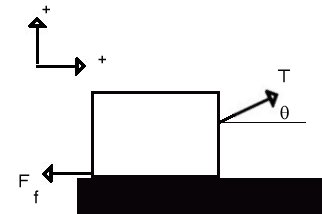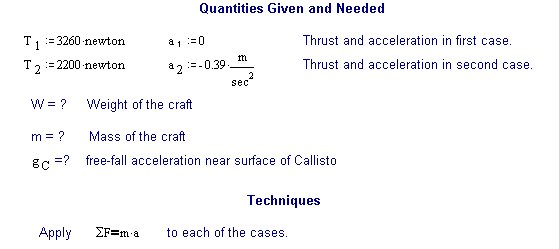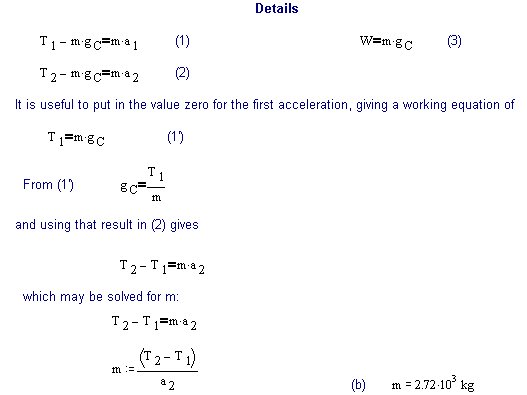
| Last revised 1999/10/07 |
39.
Since we have been given forces and asked for acceleration, this is a problem involving Newton's Second Law
Sum (F) = m a
We can simply substitute the quantities we have and solve for a in terms of the quantities we are given in each part of the problem. Using the horizontal components:
T cos(theta) - Ff = m a
a = [T cos(theta) - Ff ] / m [for part (a)]
a = g [T cos(theta) - Ff ] / [m g] [for part (b)]
The vertical components give us no useful information.
40.
(The given force F is labelled F1 when it acts on m1 and F2 when it acts on m2
Once again, we can apply Newton's Second Law to the horizontal components of the forces and accelerations. We apply F = m a first to the two blocks together so that N will drop out while we calculate a. Next we apply the equation to m1 or m2 to determine N itself.
|
Part (a):
F = (m1 + m2 ) a , Then applying F=ma to mass 2:
N = m2 a |
Part (b):
- F = (m1 + m2 ) a , Then applying F=ma to mass 1:
-N = m1 a |
The accelerations in the two cases are the same, but the forces exerted by one block on the other is not. The nonequality is because the force between blocks has to accelerate m2 in part (a) and m1 in part (b).
54.
Solution obtained using MATHCAD.
If you want to copy the files, click
on the following:
Graph, solution parts
1,
2, and
3.


60.